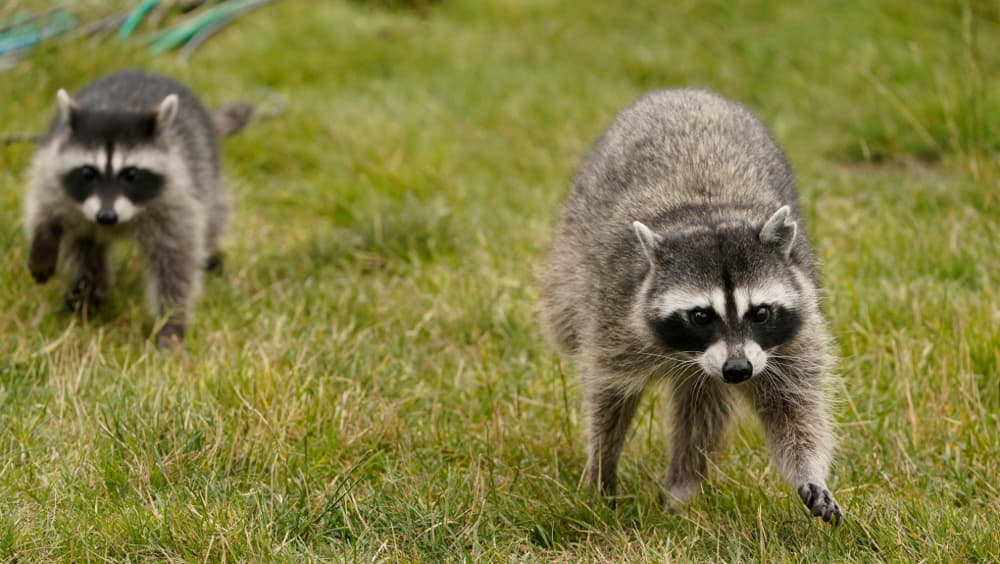Raccoons are nocturnal creatures that can be found all over the world. One of their most remarkable attributes is their highly developed sense of smell, which plays a crucial role in their daily activities. But just how far can raccoons smell?
These nocturnal mammals have a distinctive black mask on their face and a ringed tail, making them easily recognizable. But there is more to these creatures than meets the eye. Raccoons’ highly sensitive noses contain an impressive array of scent receptors, allowing them to decipher a diverse range of smells. This great sense of smell is critical for survival, assisting in discovering food sources, identifying potential hazards, and navigating their surroundings.
Raccoons’ olfactory prowess has become a subject of fascination. A closer look at their sense reveals a great deal about how raccoons interact with their environment. This article will provide insight on the incredible distances that these enigmatic creatures can detect odors.
Table of Contents
How Far Can Raccoons Smell?
Raccoons can detect odors from two to three miles (3.2 to 4.8 kilometers) away. This remarkable olfactory ability is attributed to their highly developed noses, equipped with a vast array of scent receptors. However, their sense of smell is not limited to long distances. They are also able to detect scents from close proximity, which allows them to navigate their immediate surroundings.
The Highly Developed Olfactory System Of Raccoons
Raccoons have a keen sense of smell, which is essential to their survival. The olfactory senses of these animals are approximately 100 times more sensitive than those of humans. The olfactory bulbs in a raccoon’s brain, responsible for processing smells, are relatively large compared to those of many other mammals. Consequently, they can detect scents from up to a mile away.

The architecture of a raccoon’s nose is specifically built for sensing odors and other essential environmental inputs. The vomeronasal organ (VNO) is positioned deep inside the nasal cavity and is responsible for olfaction.
This structure consists of two tubes lined with cells that are attached to nerve endings, allowing it to pick up signals from chemical molecules in the air. Additionally, specific receptors at the tip of its snout aid in the recognition of scents emitted by items such as dead animals or decaying flora.
Raccoons’ noses can remember certain smells over long periods of time. Their nasal cavity contains a significant number of olfactory receptors. They are able to recall a specific odor without difficulty after long intervals, if exposed to it repeatedly before.
In addition, raccoons have a specialized organ called the vomeronasal organ, or Jacobson’s organ, which is located in the roof of their mouth. This organ is responsible for detecting pheromones, which are chemical signals used for communication between animals. This allows them to obtain critical information about the reproductive state and social dynamics of other raccoons, which helps them communicate and mate.
Raccoons’ Sense Of Smell Vs. Dogs’
It is often held that dogs have the best sense of smell of any animal. However, raccoons have a superior sense of smell when compared to other mammals such as cats and dogs. This is due to the large surface area of their nasal cavity, which is about four times larger than that of a dog’s.
Their noses are lined with millions of olfactory receptors that are able to pick up on even the faintest of smells. In fact, some studies have shown that raccoons can detect scents that are up to 100 times fainter than what a dog can detect.
Factors Affecting Raccoons’ Sense Of Smell
There are five main factors that can affect raccoons’ sense of smell, including weather conditions, wind direction, type of scent, age and health. On windy days, it becomes more challenging for raccoons to pick up scents as the wind can disperse them. Heavy rain or snow also makes their ability to detect scent more difficult.
In addition, certain scents may be more difficult for raccoons to detect than others. For example, strong odors such as ammonia can overwhelm their olfactory receptors, making it harder for them to pick up other scents.
Internal factors including age and health also influence a raccoon’s sense of smell. As they age, their olfactory receptors may become less sensitive, reducing their ability to detect scents. Similarly, if a raccoon is suffering from a respiratory infection or has a blocked nose, it can impair their sense of smell.
What Do Raccoons Use Their Sense Of Smell For?
Raccoons leverage this keen sense of smell to find food, locate mates, identify potential threats, navigate their environment adeptly and social interactions. Their olfactory prowess demonstrates their versatility, allowing them to survive in a variety of settings.

Find Food
Raccoons are omnivores, which means they consume both plants and animals. They eat a wide variety of foods, including fruits, nuts, insects, small mammals, and even garbage. With their keen sense of smell, raccoons can easily sniff out potential food sources. They can sense scents from a variety of sources, such as possible prey, decaying matter, and even the presence of other raccoons.
They have been observed digging through earth and trash with their front paws in search of insects and other small prey. Their capacity to discern the freshness and edibility of food based on scent assists in optimizing their foraging efforts. This ensures they obtain the necessary nutrients for their survival and reproduction. The olfactory ability aids them in efficiently scavenging for meals in diverse habitats, from urban areas to woodland landscapes.
Locate Mates
This animal also uses their sense of smell to locate potential mates during the breeding season. Male raccoons will often mark their territory with urine, which contains pheromones that can be detected by females. This allows them to find suitable partners for reproduction.
Identify Potential Threats
Raccoons are nocturnal and frequently navigate in low-light circumstances. They use their smell capabilities to detect predators and other risks in their surroundings. They are able to pick up on the scent of predators such as coyotes, bobcats, and owls, allowing them to stay out of harm’s way.
Raccoons rely on their keen sense of smell to navigate their surroundings, especially at night when their vision can be limited. By detecting and following scent trails, they can effectively locate food sources and return to familiar den sites. This ability also aids in territorial marking, allowing raccoons to make informed decisions about their movements within their territory.
Social Interactions
Raccoons use their sense of smell for social interactions in addition to survival. They have a complicated social structure, and olfaction is important in their communication. Scent glands on raccoon cheeks, chin, and anus are used to establish territory and communicate with other raccoons. They also use their urine and feces to leave scent trails, which can convey information about their age, sex, and reproductive status.
Furthermore, raccoons are known to engage in “mutual sniffing” when they come into contact with one another. This behavior involves sniffing each other’s faces and anogenital regions, which helps them gather information about the other raccoon. This is especially significant for females during breeding season. Because they can tell if a male is suited for mating based on his fragrance.
Scent That Attract Raccoons
There are 10 popular and extremely effective scents that attract raccoons including:
- Garbage
- Pet food
- Fatty meats and Fish
- Bacon
- Fresh fruits and Vegetables
- Marshmallows
- Sweet corn
- Honey
- Eggs
- Birdseed
Read this article for details about each type of scent.

